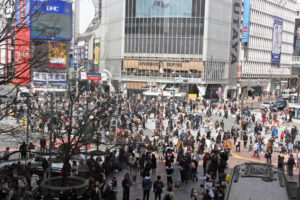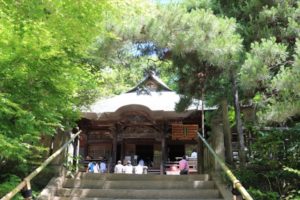Have you ever heard of “Soba noodle” in Japanese ? It is one of most popular Japanese foods.If you came to JINDAIJI temple which is the second oldest temple in Tokyo, I should try JINDAIJI SOBA !!
This article introduce JINDAIJI SOBA!!
Contents
Jindaiji Temple and “Jindaiji Soba” 深大寺そば
Jindaiji is the second oldest temple in Tokyo. It is in the western part of Tokyo (Tama Area) taking about 40 minites from mid central of Tokyo by train and bus.
In September of 2017, one Buddha statue designated by “National Treasure of Japan”, so more people are gathering to see it in the temple. It is the Buddha statue of the 7th – 8th centuries called “Hakuho Buddha”, the oldest national treasure in eastern Japan.(The Statue of Hakuhoh Buddha:http://www.jindaiji.or.jp/about/kokuho.php)
“Jindaiji Soba” became famous about 200 years ago (17th century), it was at the time of Edo period in the Japanese calendar. Jindaiji Soba was also known to the various “Daimyo(Japanese feudal lord)”.
You may like the more about JINDAIJI temple▽
What is “Soba”?
“Soba (in Japanese )” is Buckwheat noodles, the most popular varieties of Japanese noodles.
It is made by mixing buckwheat flour with water and wheat flour, kneading it, spreading it out thinly and cutting it into long thin noodles.
There are about 20 soba restaurants around Jindaiji temple, which is the second oldest buddhism temple in Tokyo. The temple is famous for Soba (buckwheat noodles). You may not decide which soba restaurant to choose. Here it is an introduction of Soba restaurant [Suzuya(鈴や in Japanese)] which is located besides the main entrance of temple.
Jindaiji Soba restaurant review about “Suzuya”
It is 50 years since “Suzuya” was founded. It is still a family-run restaurant.
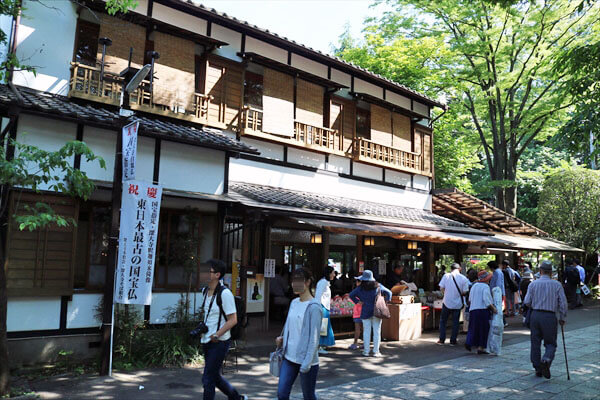
The exterior is a venerable Japanese wooden building that used to be nostalgic. When you come to the temple, you will see other traditional Japanese architectures carefully preserved.It will look like a time slip to 200 years ago Japan.
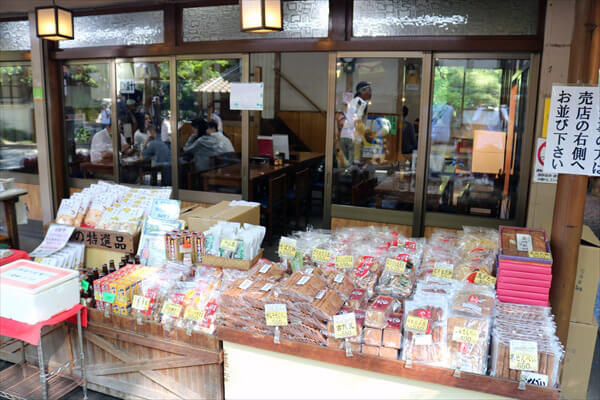
In the restaurant, Japanese nostalgic sweets are sold. Buckwheat rice cracker, soba tea, soba, soba, soba noodles, fried noodles, to Daruma rice crackers. It will be fun for you to just watch rare sweets and items in stores.
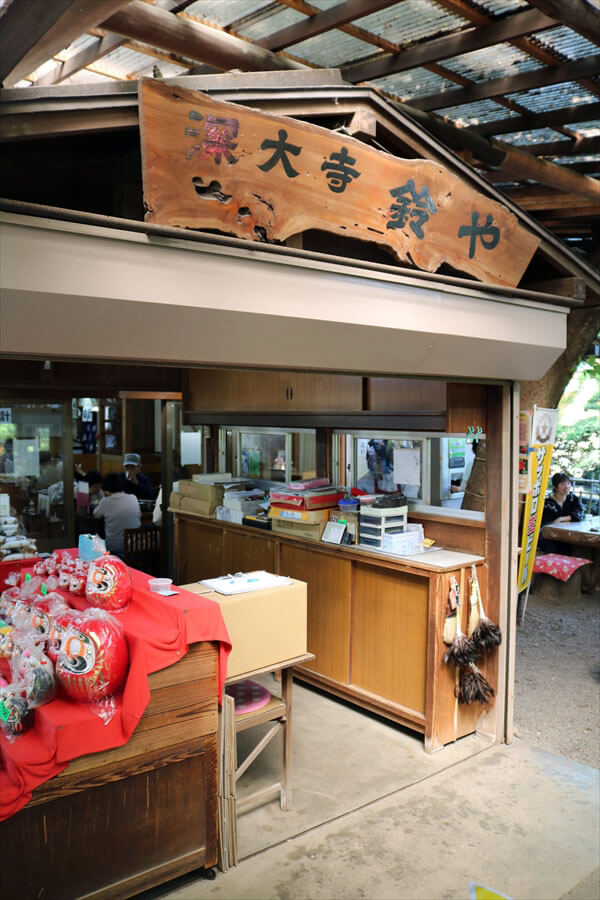
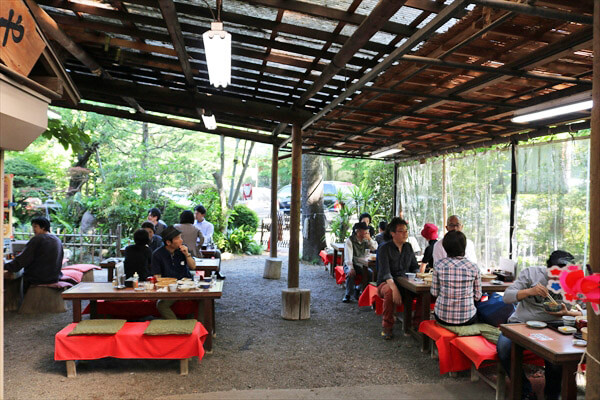
There are “in-store seat” or “open air seat (outdoor space with open roof space)”, you will choose one of which. From Spring to early summer, the surrounding green is very
beautiful and refreshing. The open seat is especially very pleasant.
Menu, Restaurant atmosphere:Jindaiji Soba restaurant “Suzuya”
You can choose hot or cold soba noodles as main menu. In addition there are side menus that match the liquor and a little Japanese style sweets. The number of selections are not too much but not too little, you will have a nice choice of side menu, no matter what you select.
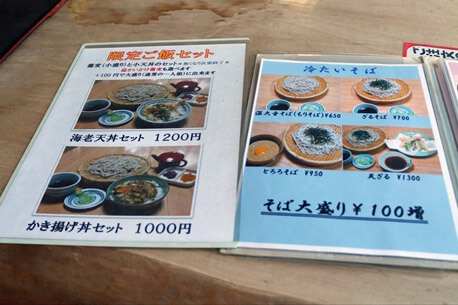
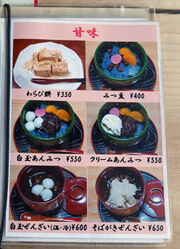
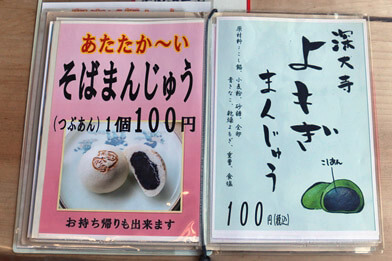
Soba of Suzuya features buckwheat flour made by moderating the amount of water every season, smooth throat, and relatively thin noodles. The thickness of the noodles is irregular, it is proof of “teuchi-soba(being handmade)”. When I heard the shop’s recommendation, it seems to be “fried tempura”.
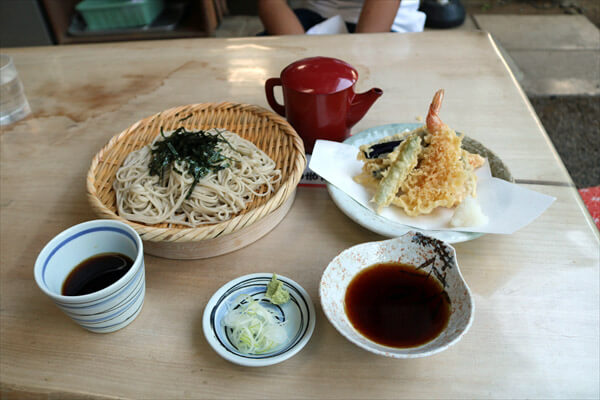
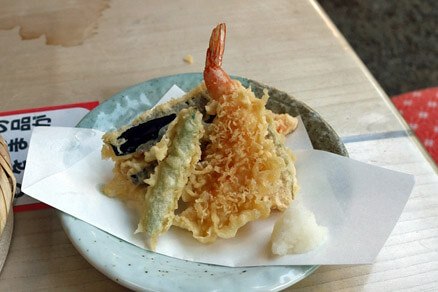
The photo is “Tenzaru” menu whichi is one of very typical cold soba with “Tempra”. It cost 1300 JPY (= about 12USD, 10EURO). It is possible to make it larger volume of soba with addtional 100JPY.
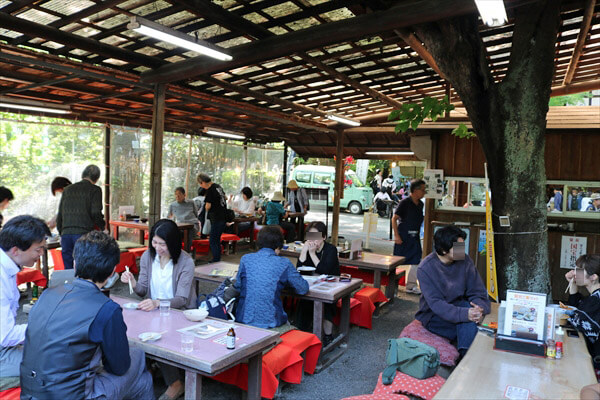
I ate delicious soba , feeling the clean air and greenery in the Jindaiji Temple.
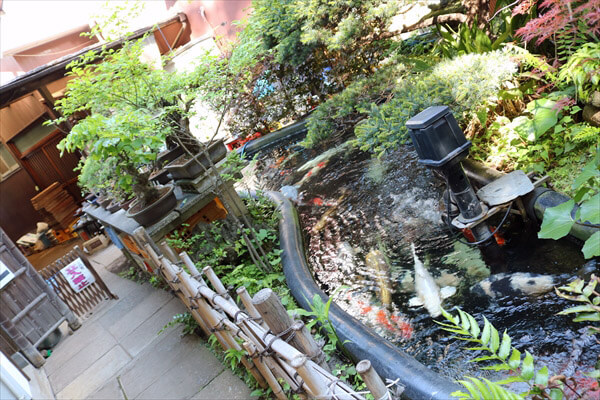
A carp pond in the Suzuya soba restaurant.
Total impression:Jindaiji Soba restaurant “Suzuya”
I enjoyed “Suzuya”‘s old-fashioned buckwheat store with a family-run restaurant. Soba handled with seasonal moisture content was good and the price is also conscientious(reasonable). In fact, the average price here is a “touristic price (it is quite expensive)” but the menu of Suzuya starts from the 700 yen range.
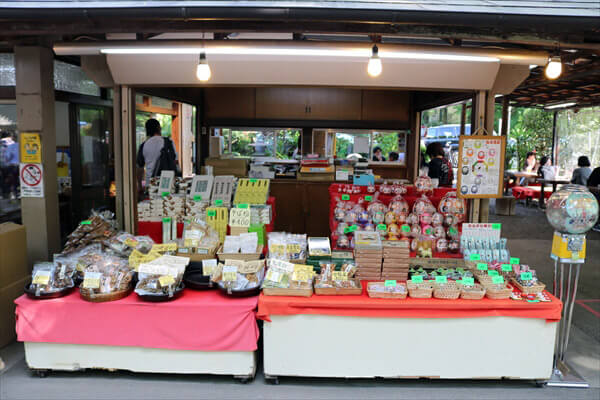
There are not a lot of waitresses(waiters) here, so when it is crowded, you may wait at the entrance before you sit at the table. But you will feel time is not so long if you wait while feeling the warm atmosphere and history of the restaurant.
Location , Access & Useful information:Jindaiji Soba restaurant
20minutes from “Shinjuku station” to “Chofu station” by Keio Railway Line.
10minutes from “Chofu station” by Bus.




